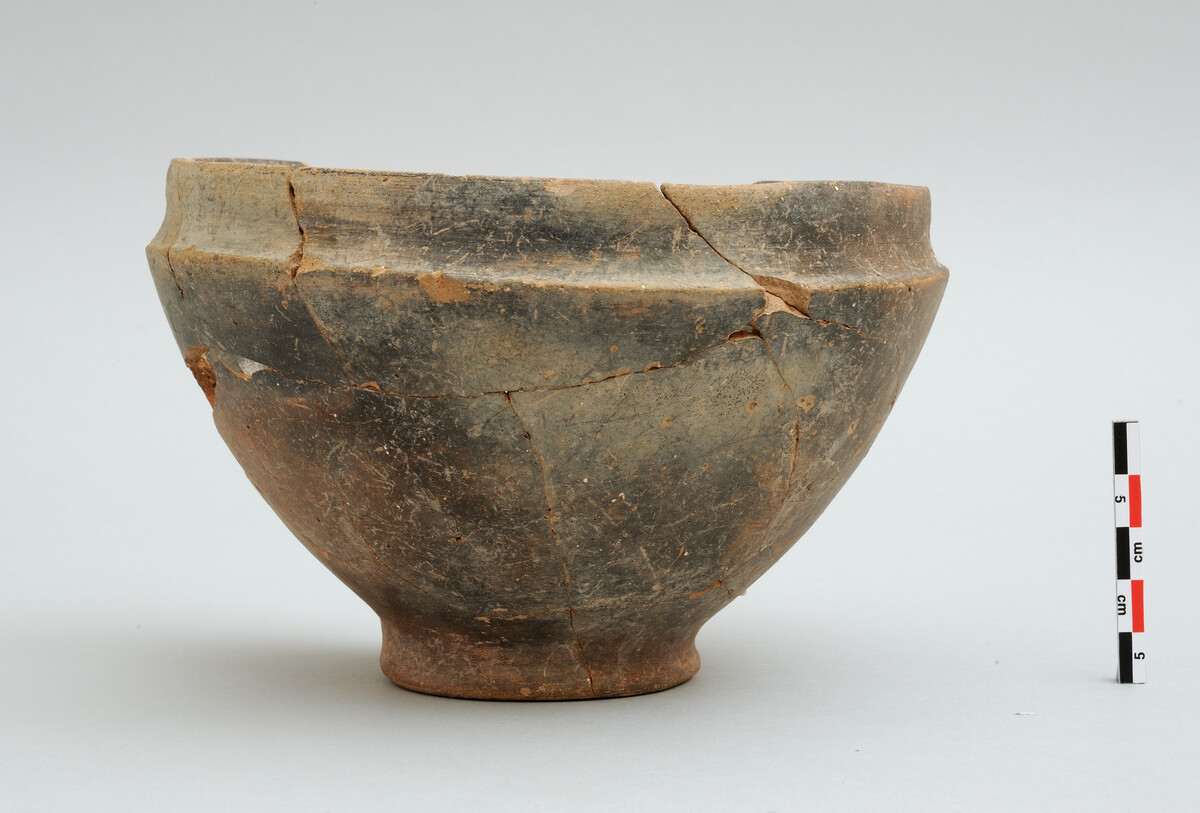Neolithic and Early Bronze Age finds from excavations at the citadel of Midea 2004–2006
Excavations between 2004 and 2006 at the Mycenaean citadel of Midea produced material dating to the Late Neolithic, Chalcolithic Early Bronze Age and early Middle Bronze Age (c. 4800–2000 BC). Analysis of pottery gives insights into local production centres as well as the exchange networks in which Midea was involved. The finds and findings give information on the use of the site during the Pre-mycenaean period.
The Mycenaean citadel of Midea, situated on a hill at the border of the Argive plain, has been excavated by a joint Greek-Swedish program under the direction of Dr. Katie Demakopoulou. From the very beginning of the excavations it was noted that settlement of the site goes back to the Neolithic and Early Bronze Age periods. However, it was not until the 2004–2006 seasons that stratified deposits of the Neolithic period (Late and Final Neolithic; 4800–3100 BC), the Early Bronze Age (Early Helladic [EH] I and II; 3100–2200 BC) and the start of the Middle Bronze Age (EH III Late – Middle Helladic I; 2200–1900 BC) were identified on the upper part of the Acropolis of Midea. This project, funded by the Austrian Science Fund aimed to explore these findings and finds and to put them in context with the already known finds of Southern Greece and the Aegean.
The first use of this area which is documented by a fill with extremely fragmented sherds is dated to the later part of the Late Neolithic period (4800–4500 BC). A pit grave which was partly dug into this fill contained a probably secondary inhumation of a woman of 40–50 years. According to the radiocarbon dates the burial is dated between 4350 and 4270 BC. A disturbed rock-cut tomb may be dated from the Final Neolithic till EH II. For EH I (3100–2700 BC) a horizon of use was identified. EH II (2700–2200 BC) evidence is present for its developed phase, and a strong wall, most probably part of a fortification, as well as a deposit of a dining set belong to this period. In the excavated area habitation was interrupted from the late phase of EH II to the late phase of EH III. For the start of the Middle Bronze Age there is evidence for a floor horizon on which entire vessels were located in certain distance from each other.
The archaeological and scientific analysis (petrography, chemical and Neutron Activation Analysis) of the pottery produced interesting aspects on the position of Midea in the Northeastern Peloponnese. For EH I a number of local and regional fabrics have been identified. This includes a fabric originating from an important centre of production in the Talioti Valley which specialised in the fruitstand form in particular. In addition we have identified an import from the island of Aegina. During EH II the assemblage is dominated by the ›Talioti‹ fabric but includes other regional and local fabrics, however, these are in a smaller proportion than in the Neolithic and EH I periods. In addition about 10 % of the pottery appears to be imported from the Korinthia. These pottery is associated with high fired, dark slipped table wares in particular consisting of saucers and sauceboats indicative of communal consumption practices.
Figurines of clay, jewellery, spindle whorls, mat impressions, stone implements as well as palaeozoological remains give information on the various activities on the site. According to the flakes Midea was probably a secondary production centre of obsidian tools. The abundance of obsidian shows that Midea was in close connection to coastal settlements. At the same time fragments of storage vessels with roller impressions, weights of marble and the remains of the fortification indicate the relatively high rank of Midea in the EH II settlement network of the Argolid.
Principal investigator
Team
Cooperations
- Katie Demakopoulou (Midea excavations)
- Peter Martin Day (University of Sheffield)
- Ronny Friedrich (REM Mannheim)
- Armelle Gardeisen (CNRS)
- Arhondia Koukou (Midea excavations)
- Olga H. Krzyszkowska (University of London)
- Joseph Maran (Universität Heidelberg)
- Christos Matzanas (Greek Ministry of Culture)
- Michael Schultz (Universität Göttingen)



